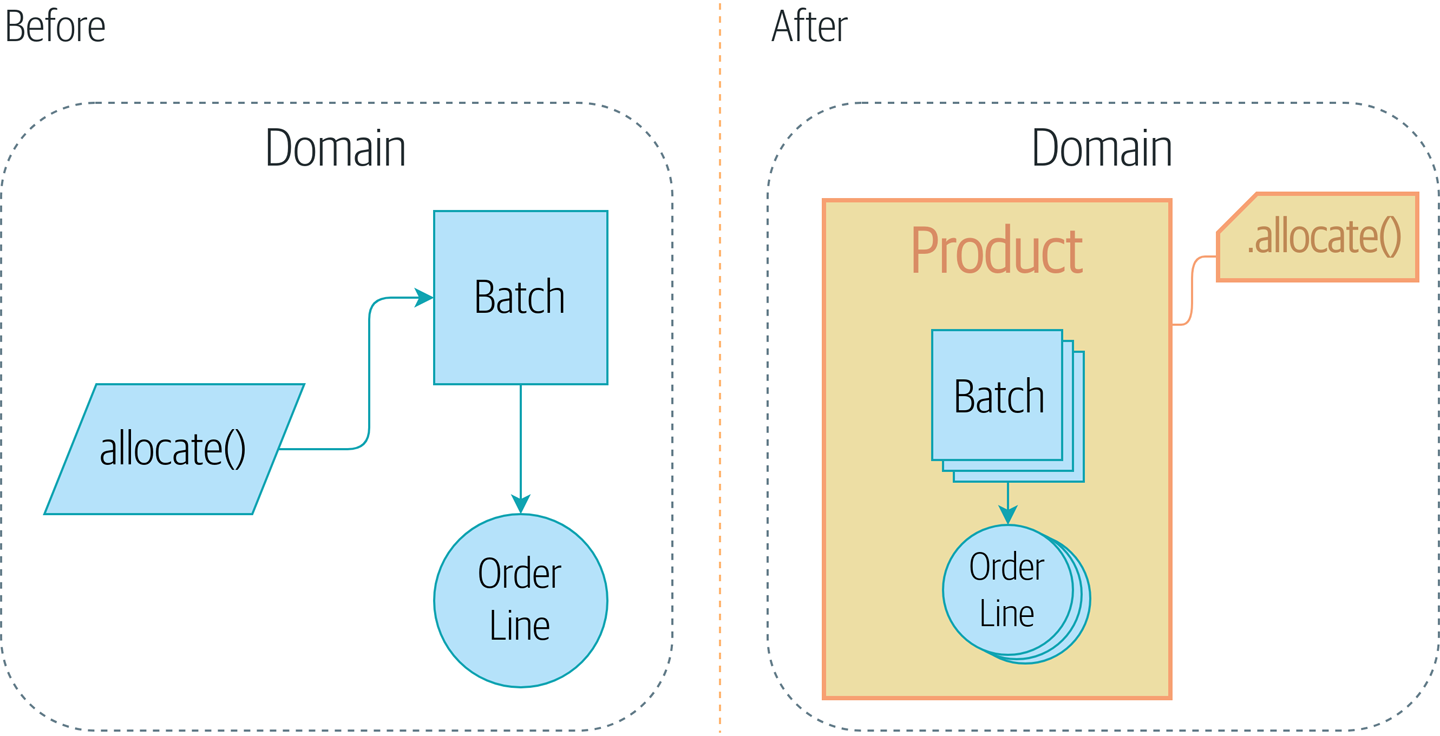Chapter 7. Aggregates and Consistency Boundaries
In this chapter, we’d like to revisit our domain model to talk about invariants and constraints, and see how our domain objects can maintain their own internal consistency, both conceptually and in persistent storage. We’ll discuss the concept of a consistency boundary and show how making it explicit can help us to build high-performance software without compromising maintainability.
Figure 7-1 shows a preview of where we’re headed: we’ll introduce
a new model object called Product to wrap multiple batches, and we’ll make
the old allocate() domain service available as a method on Product instead.

Figure 7-1. Adding the Product aggregate
Why? Let’s find out.
Tip
The code for this chapter is in the appendix_csvs branch on GitHub:
git clone https://github.com/cosmicpython/code.git cd code git checkout appendix_csvs # or to code along, checkout the previous chapter: git checkout chapter_06_uow
Why Not Just Run Everything in a Spreadsheet?
What’s the point of a domain model, anyway? What’s the fundamental problem we’re trying to address?
Couldn’t we just run everything in a spreadsheet? Many of our users would be delighted by that. Business users like spreadsheets because they’re simple, familiar, and yet enormously powerful.
In fact, an enormous number of business processes do operate by manually sending spreadsheets back and forth ...
Get Architecture Patterns with Python now with the O’Reilly learning platform.
O’Reilly members experience books, live events, courses curated by job role, and more from O’Reilly and nearly 200 top publishers.

